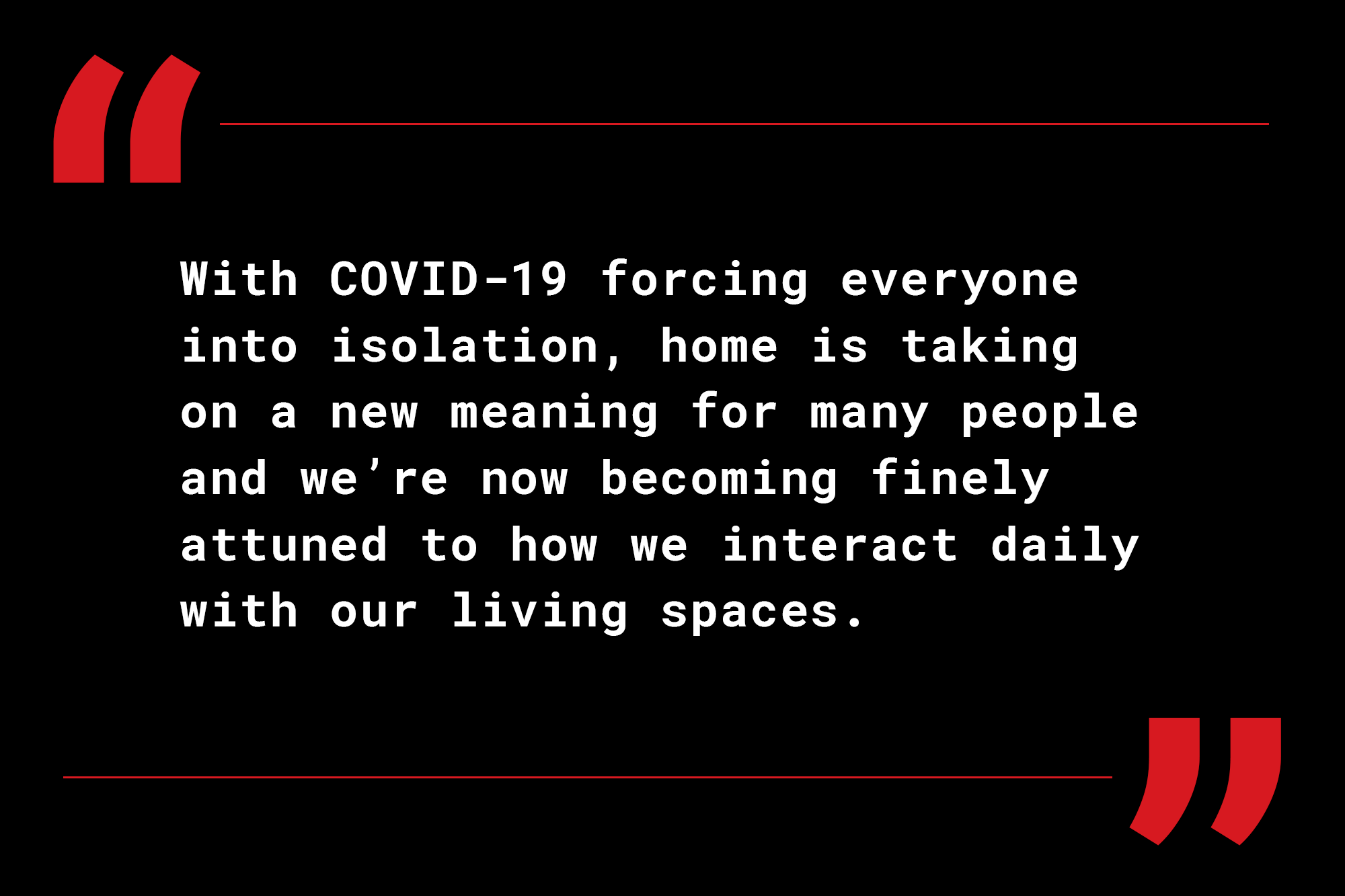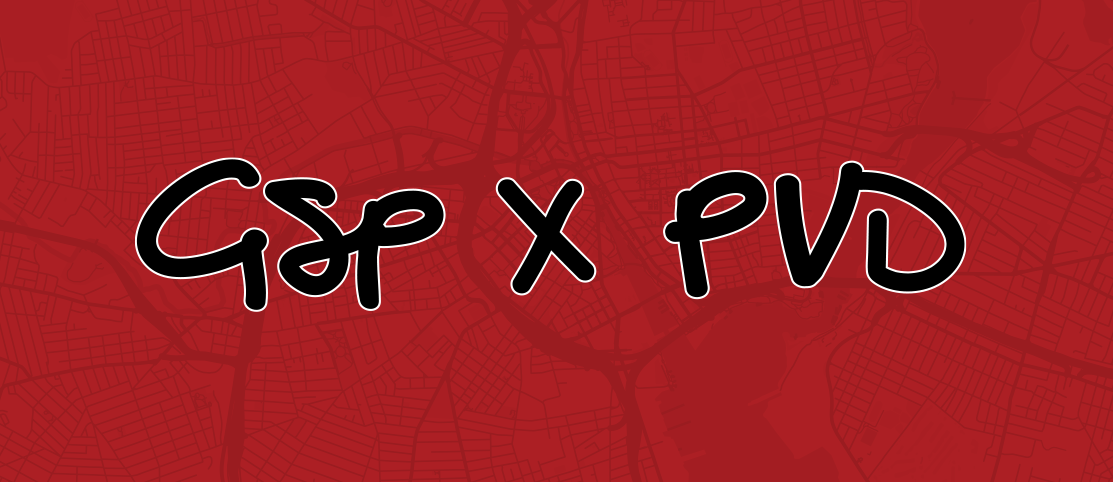Changing The Way We Design Interior Spaces
I’m a homebody by default. As someone who’s pretty introverted, even before the pandemic I could usually be found enjoying most of my free time curled up on the couch with my beloved dog and boyfriend, watching Netflix, playing video games, or reading a book. Home is where I feel secure, safe, and comfortable.
With COVID-19 forcing everyone into isolation, home is taking on a new meaning for many people and we’re now becoming finely attuned to how we interact daily with our living spaces. From personal experience, I can attest to how our cozy little apartment feels even smaller these days, for better or worse. A recent article on ApartmentTherapy.com caught my eye as it details what future residential design might look in a post-COVID world, and it’s got me thinking more about all the nuances I’ve come to recognize in my current living space. As real estate in general (not limited to just residential but also office, restaurant, and retail) gets developed in the near future, the following areas will likely be taken under consideration more than ever before.
Entryways – A clear area for the transition between exterior and interior space to take place will be crucial. Not only will these entry spaces be designated as spots for decontamination, but they also help us make a mental shift as we enter a space. There will inevitably be a change in how entryway designs get spread out to accommodate multiple people while maintaining distance; more accessible corridors, stairways, and elevators for multi-unit developments will likely be taken into account to help mitigate risks of crowded entries to residences or other types of buildings.
Antimicrobial or Easy-to-Clean Surfaces – Cleanliness is crucial to stopping the spread of germs, and it’s predicted that homes (and likely other spaces) will use more antimicrobial or easy-to-clean surfaces in their construction. Materials like copper, Richlite, or krion will be commonly used for high-touch surfaces like wall panels, countertops, even furniture. I’ve already felt blessed that our apartment has easy-to-clean wood laminate flooring and absolutely no carpeting (especially appreciated when we were potty training our pup), and I think hard, non-porous, non-fibrous surfaces will be the material of choice in construction of spaces going forward.
Outdoor Living Space – Access to outdoor space, whether it’s a yard or a balcony, is so essential for people to connect with nature and get some fresh air in a confined, safe way. In the future of residential construction, we’ll likely see an increase in accessible green spaces, both shared and private. I imagine retailers and restaurants would follow suit; patio areas will likely become a sought-after feature more than ever. Recognizing the benefits of spending time outside, I’m determined to enhance our apartment’s small backyard this summer, with plans to build a rental-friendly, low-budget, removable deck from wood pallets (thanks for the idea, Pinterest!) and take advantage of the small but accessible outdoor space as a much needed respite from being cooped up inside.
Open-Concept Floorplans Might Be Reconsidered – This is one area that will be finely balanced in future design and construction of living and working spaces particularly. While there’s something to be said for an open floorplan that allows space to feel larger and airier, many people find that there’s a need for some defined spaces that are compartmentalized or closed off from others. At home, I’ve quickly discovered the importance of separated and defined spaces as my boyfriend and I struggle to co-work in our small apartment. One of us will work in our office/spare room, while the other (usually me) ends up working from the adjacent open living room or kitchen; not a super ideal situation, but at least if we have concurring Zoom meetings he can close the office door to give us both some privacy and focus. Flexibility in the function of rooms is also essential, and it’s expected that the design of future residences and offices will feature rooms designed for multiple uses; think home office/yoga room, or conference room/shower (for those who’ve visited the GSP office, you’ll get the reference) 😉
Expanded Kitchens – If one good thing has come out of this pandemic, it’s the fact that people are cooking at home more than ever. It’s only to be expected that kitchens will continue to be an essential feature of residential design in the near future, and we can expect to see their footprint be expanded to accommodate the rise in interest of cooking at home. Increased pantry space and high-quality appliances will be seen not as a trend, but a necessity, in the future of residential design.
Health-Focused Tech Features (Touchless, Of Course) – “Smart” features will no longer be a luxury, but rather a commonplace feature, of future-designed interior spaces. Motion sensor and voice control features for things like opening doors/cabinets or turning on appliances or lights will be standard in a post-COVID world that tries to limit our physical contact with high-touch surfaces. It’s likely that homes, offices, restaurants, and more spaces will use technology to promote health and wellbeing: smart air filtration systems and auto-adjusted light and temperature settings are just a few of the tech-focused features that will be more commonly integrated into the design of interior spaces.
It will be interesting as time goes on to see how these areas of interior design get applied to new residential developments in particular, but also thinking of how they can be applied towards the design/construction of restaurants, retail, and office spaces. For me personally, increased time spent at home now means I’m thinking a little differently about how to cohabitate and use my given space more effectively. After reading the original article, I felt a little ping of self-pity at my apartment’s lack of several of these features, but in the end I still feel happy and appreciative to have a roof over my head and a space to live and now work from, no matter how small or chaotic it might seem in these times. Home is still home, and the way we adapt and improve our interior spaces for the new future will be an awesome thing to behold.




